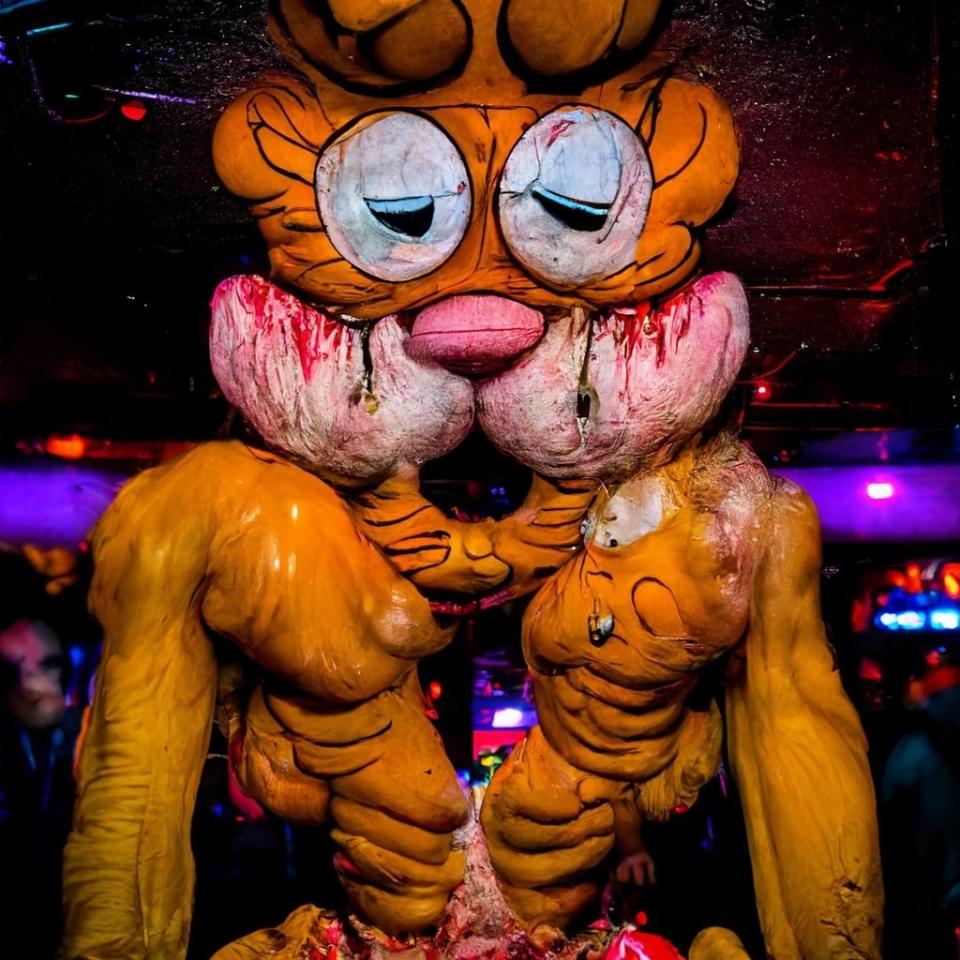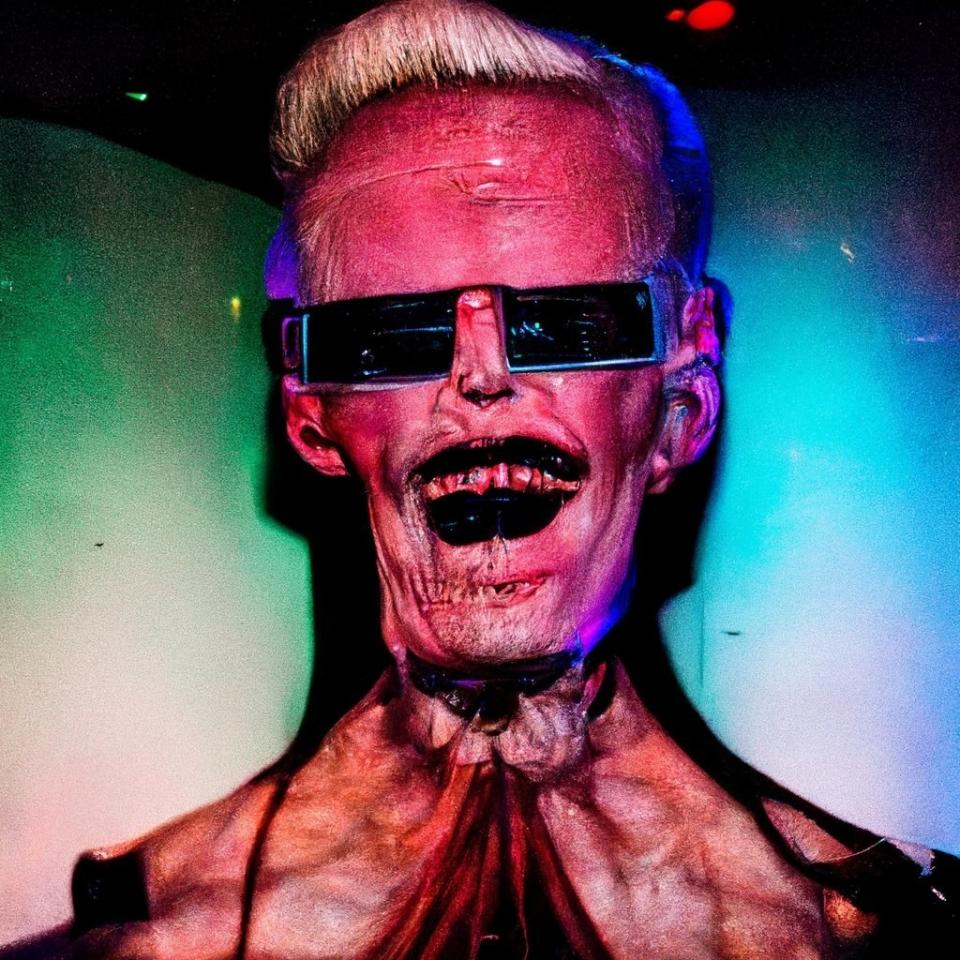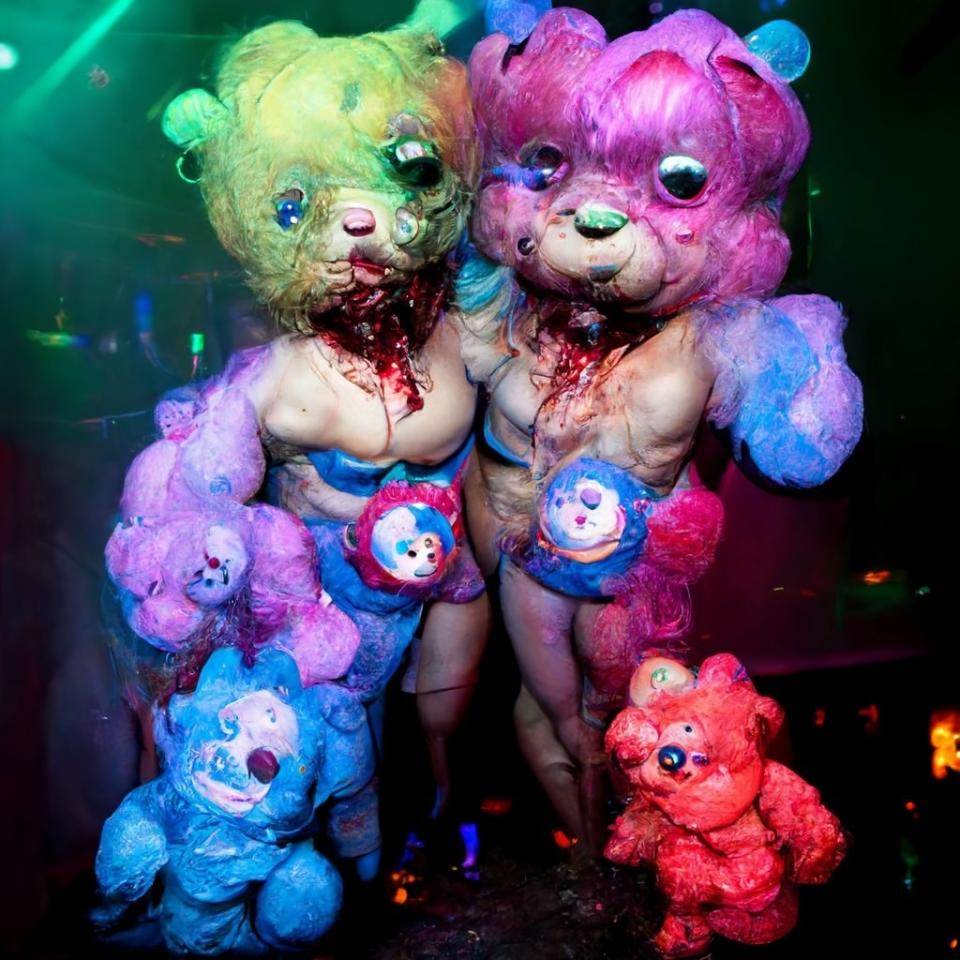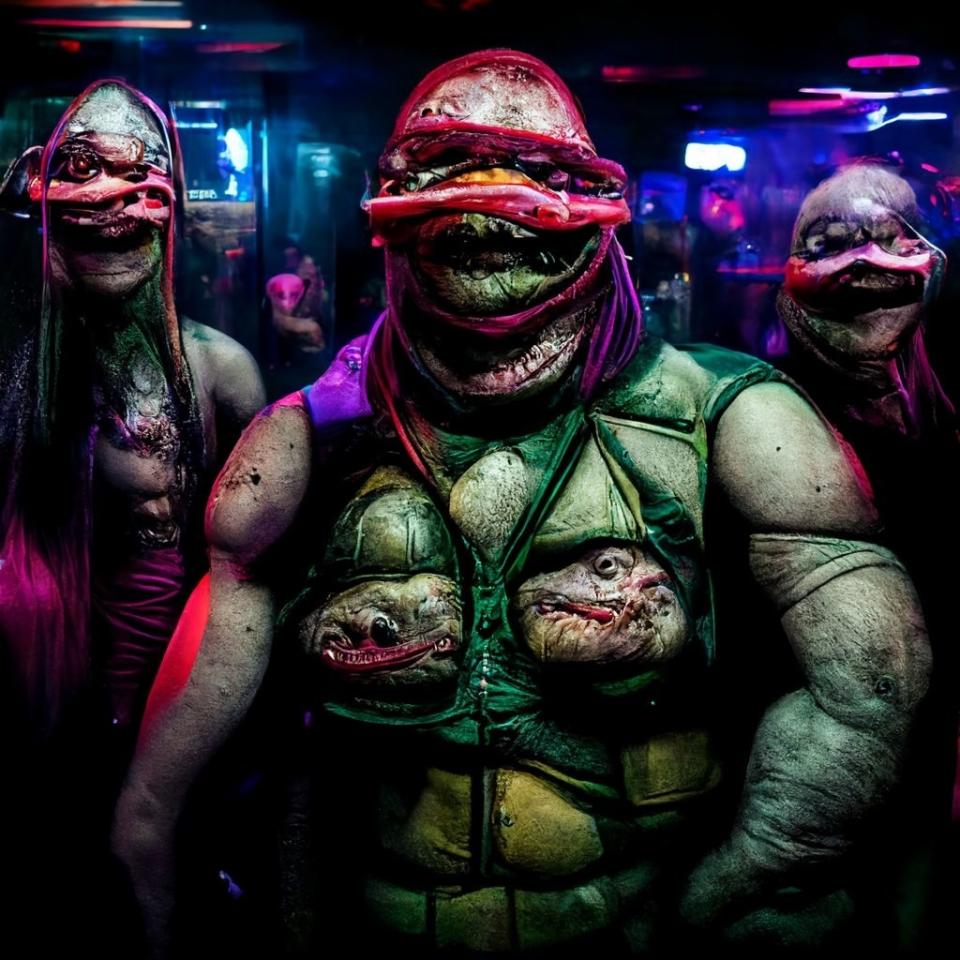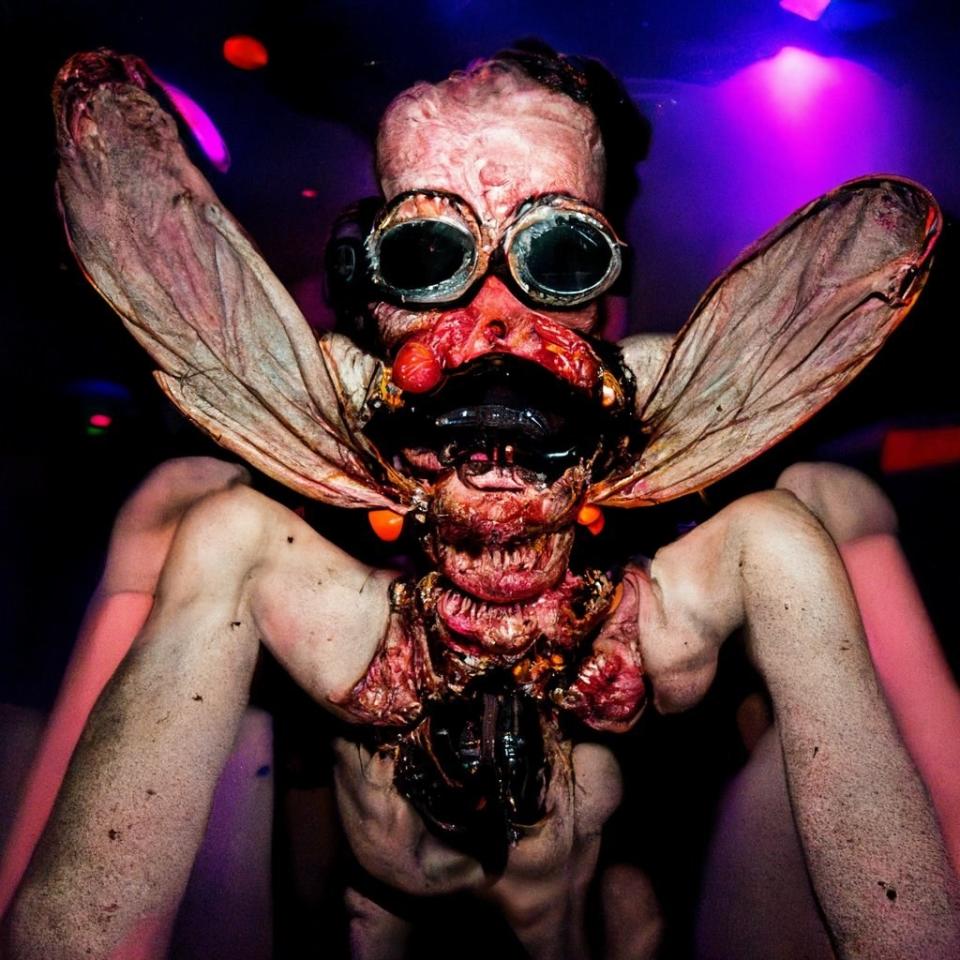This Artist Used AI To Turn The Met Gala, Coachella, And Other Huge Events Into A Grotesque Body Horror Nightmare
Disclaimer: The following post contains sensitive images that might be disturbing to some.
Call me a killjoy, but I'm one of the few people who doesn't really give a rat's ass about events like the Met Gala or Coachella.
Paramount+
I guess the photos are fun to look at, but at the end of the day, they're just scene-y places for people to flex their status (and outfits)!
E!
This is why I fell in love with a photo series I recently came across on Twitter, called "Events from Hell" — it's pretty much the antithesis of what these events represent. It was created by Rob Sheridan, an independent artist, writer, and art director based in Tacoma, Washington. Rob is known for his role as the creative director for Nine Inch Nails and Trent Reznor for 15 years, as well as his use of new technologies (like AI) to create experimental art on social media. In "Events from Hell," Rob used text-to-image technology to turn nightclub, Met Gala, and Coachella photos into body horror–themed masterpieces.
Here's his series on the 2022 Met Gala:
Absolutely stunning looks at the #MetGala2022. I know it was a controversial decision, but I think opening a portal to Hell was exactly what this year's event needed to spice things up.
Like...
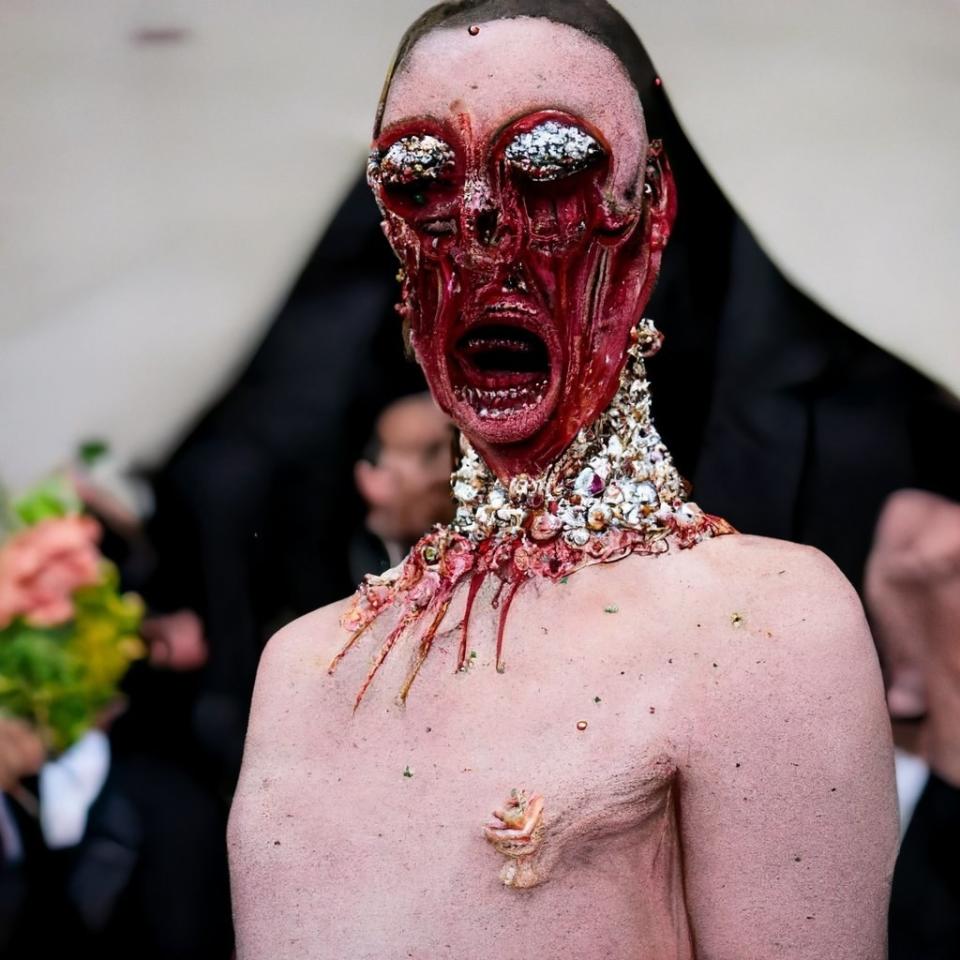
...Just wow.
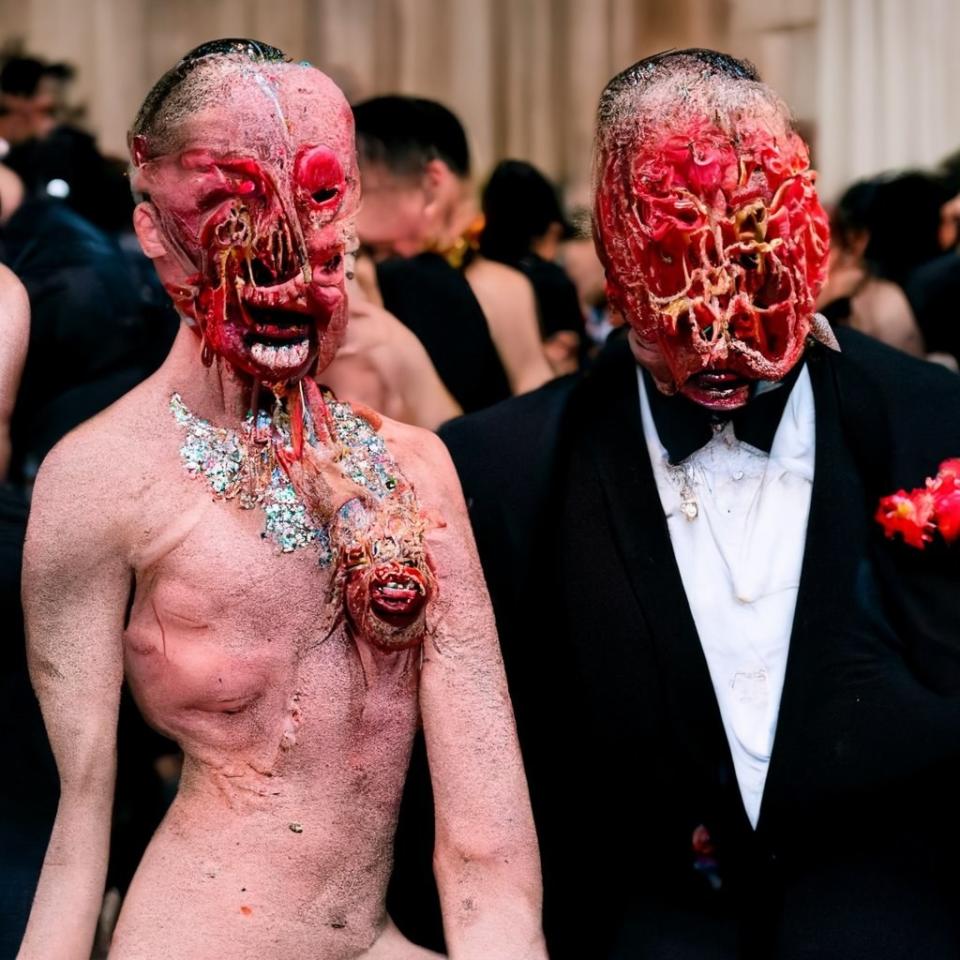
As a horror fan...
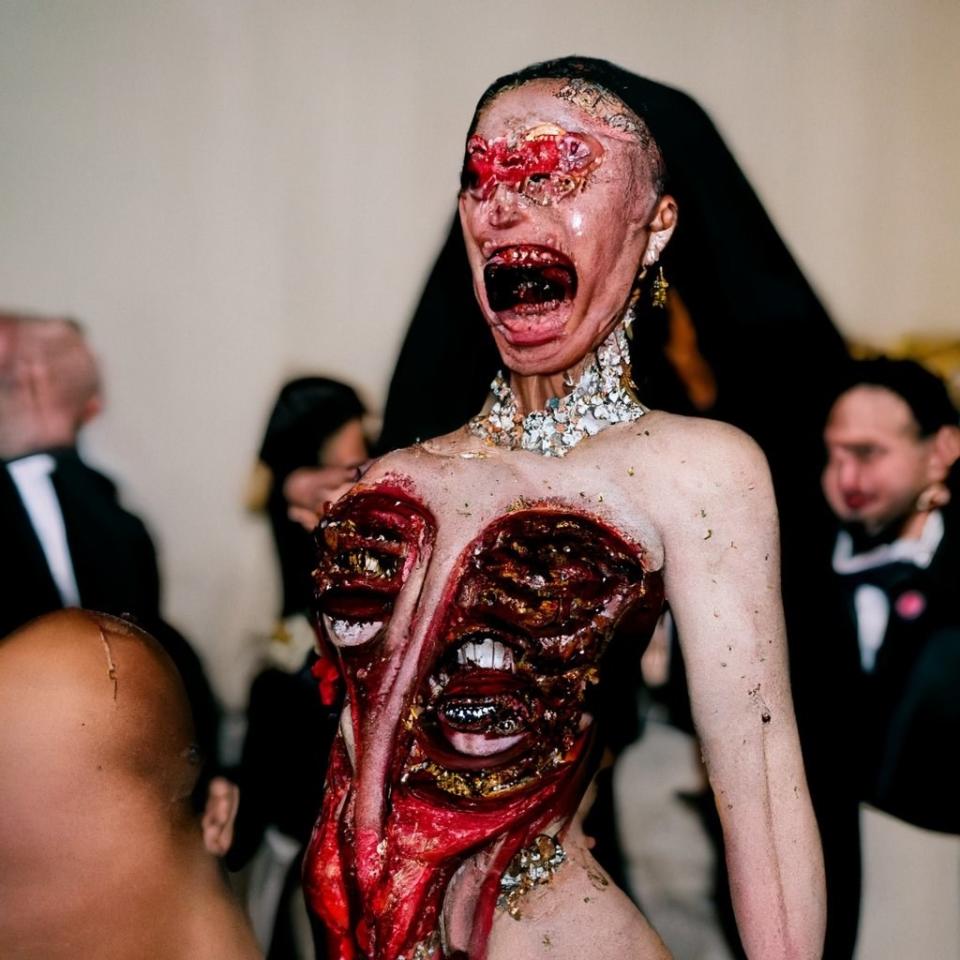
...I'm in heaven.
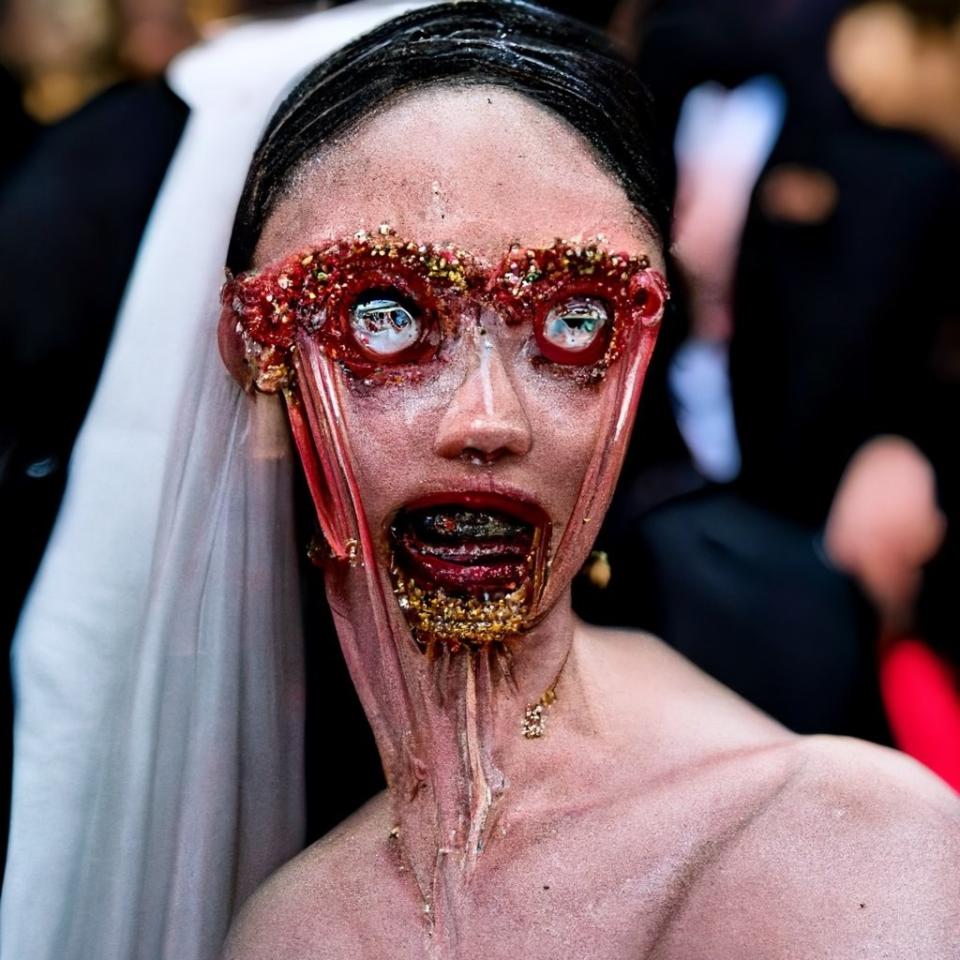
BuzzFeed spoke to Rob about what inspired this work, the reaction it caused, and how he was able to create it in the first place. "I chose current events as a way to create themes for galleries of art that were meant initially for social media, to post around the time others were talking about these events and consuming visuals of them," he told BuzzFeed. "Subverting that conversation with my imagery surprised people, and the art really resonated and took off — I've had some incredible reactions. But a big part of why I chose cultural events in particular is because I found in my extensive AI experiments that they generate particularly strong results because of the sheer wealth of crisp detailed source photos that exist for the AI to learn from."
It's #Coachella weekend, let's check in with fans at the Cronenberg tent
"Think of how many millions of flash photographs of people at Coachella have been taken and uploaded that the AI can learn from. The sharp nature of flash photos means excellent detail for the algorithm to study, and the prevalence of skin — lots of people scantily clad in the desert — brings more body horror possibilities that overlap perfectly with what we understand intuitively to be what a Coachella photo looks like. It's really about finding these moments where the right types of elements happen to collide in a way that leads to aesthetically interesting and surprising results. It doesn't work with just anything — it takes a lot of time and experimentation, and all of my experience as an art director, to get this type of work out of AI software."
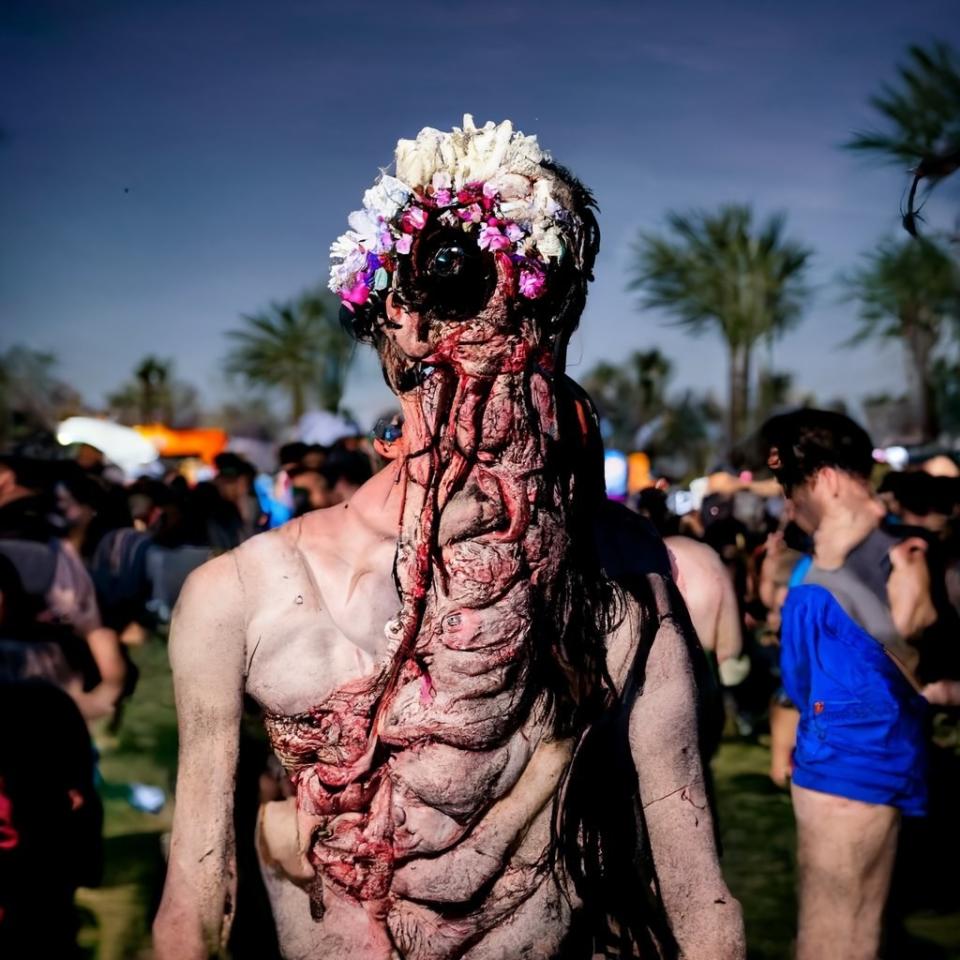
I personally had no idea how any of this even works, so I asked Rob what the process looks like. "For my AI art, I've been experimenting with a variety of different text-to-image softwares and layering the results to get the compositions I'm looking for," he said. "But at the core of the creation process is describing an image in a specific way, then gradually refining the results. If you ask the AI for 'Coachella photos,' the algorithms have studied millions of images to learn what it believes I think a 'Coachella photo' will look like, and can generate a sort of abstract, imperfect image that is really remarkable in how immediately identifiable it is as a photo from Coachella."
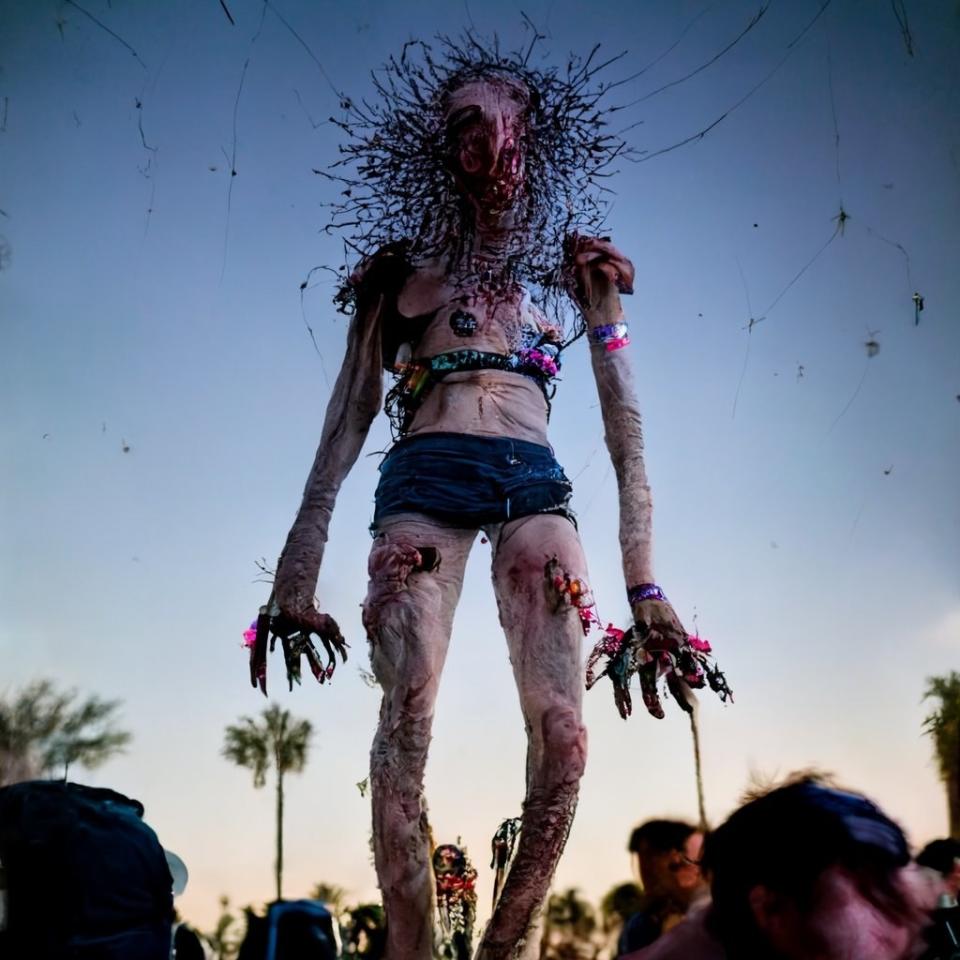
"But where most of the tech is at right now, you don't have to look very hard at the image to realize it doesn't hold up. Faces are messy, bodies are constructed weird — it's more like an acid trip version of a Coachella photo. It won't be long before AI text-to-image tech will be able to generate a 100% perfect and believable photograph from Coachella from just the two words 'Coachella photo' (and the complex ethics around that is a whole different conversation)."
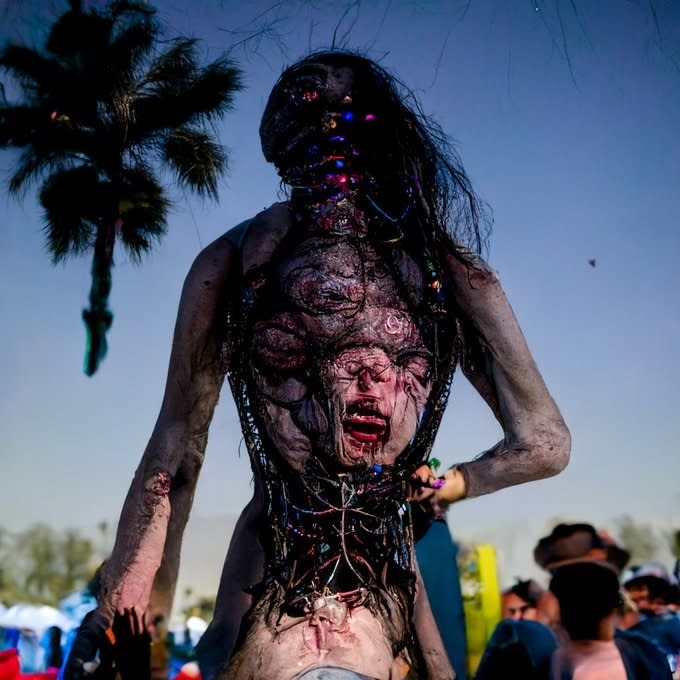
"But right now, in this strange uncanny valley of a moment we're in with the tech, I was fascinated with how beautifully 'wrong' the results were, and wondered if I could exploit those imperfections and make them purposeful. In my art career, I'm most well known as a pioneer of glitch art — breaking various technologies from scanners to VCRs to digital files — and extrapolating beauty from the errors. So of course, the 'glitches' in this new tech were what immediately interested me as an artist. ... I started writing descriptions that would cause the AI to blend in elements of horror into the Coachella photos, and I started to figure out which terms played well with the imperfections of the compositions."
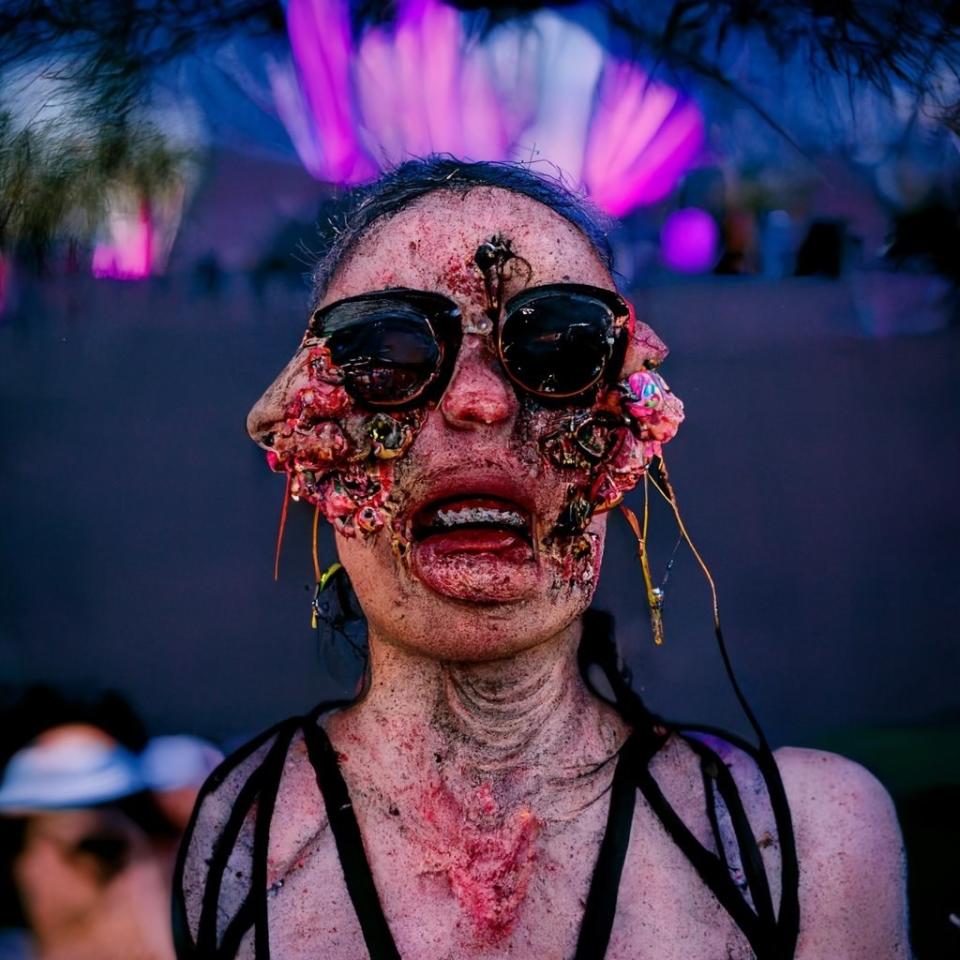
"The fact that the faces all look sort of wrong doesn't matter if half of the face is rotting into zombie flesh, and the fact that the bodies are constructed weird doesn't matter if there are twisted extra limbs. Suddenly all of the flaws were working towards brilliant horror results, and I was getting some images back that didn't look like anything I'd ever seen before — indeed, because no one had ever used the tech in this particular way. Start feeding those images back into the system and adding additional descriptions, and eventually you get some truly bizarre imagery. Working with text-to-image AI is less 'creating' in a traditional sense, and more like 'mining.' It's a trial-and-error process of digging through infinity and finding the right pathways that guide the image towards what you want, while also taking many unexpected detours along the way when the AI has ideas of its own. For me, it was a new technology to 'glitch,' and horror turned out to be the perfect way to glitch it."
Rob noted that his work has been influenced by filmmakers David Cronenberg, Clive Barker, and Stuart Gordon. "'80s cosmic and body horror films like Hellraiser, Videodrome, Society, The Thing, and From Beyond come to mind," he said.
Hell's hottest club is Ṕ̶̞͙̭̜͝û̵͖̗̰r̸͎͉̐̒g̶͈̗̑̐̀͝ḁ̶̺̂̾͠͝t̵̟̲̭͆̀̒͌͜o̶̗͑̒͒̕R̵͓̔̄ŷ̸͎̻̘̍. This place has everything: Eternal torment, indescribable suffering, demons adorned in the flesh of sinners, and DJ Beelzebul spinning shrieks of agony from the tortured souls of the damned 🔥
...and MTV's D̷̗̐̍a̸̐͜n̷͎͒̕ͅ ̸͉̄́C̷̢̱̊͆o̷̲̫̓́r̴͍̒t̴̡̜̒e̷̬͍͌̀s̴͔̬̊ė̵͖̝̚
Last but not least, here are some highlights from Rob's '80s club night series. But you can see more of his work on his Instagram, Twitter, and website.
